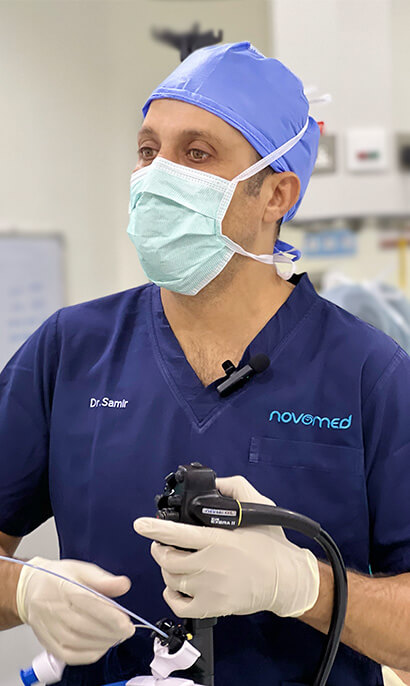
May 14, 2023
Impact of Gastric Banding Surgery on Co-Morbidities
May 14, 2023

Obesity: a global epidemic
Obesity is now considered a global epidemic. Along with obesity, an increased prevalence of related comorbidities, including type 2 diabetes, hyperlipidemia, hypertension, obstructive sleep apnea, heart disease, stroke, asthma, back and lower extremity weight-bearing degenerative problems, and several forms of cancer and depression have also been observed.
These comorbid conditions result in a decrease in life expectancy and weigh heavily on health care costs. As diet therapies have not reported effective results in long-term treatment, surgical therapy for morbid obesity is recommended. If a person’s body mass index (BMI) is above 35 or 40 with comorbidities, a person can consider a bariatric surgical procedure as treatment.
Gastric Banding
Laparoscopic Adjustable Gastric banding (LAGB) is the second most common bariatric procedure. With small incisions in the upper abdomen, the surgeon puts an adjustable band around the stomach’s top part, creating a tiny stomach pouch. The small stomach pouch will make you feel full after consuming less food, helping you lose weight. This well-known procedure has assisted people who are overweight in achieving excellent long-term and effective results.
In addition, patients who previously had Laparoscopic Adjustable Gastric Banding (LAGB) can have a revisional (correction) gastric banding surgery in case they have weight regain or reflux after the primary surgery.
Gastric balloon
Another highly effective bariatric surgery is placing a gastric balloon in the stomach. Overweight patients can make use of gastric balloon placement, which is a non-surgical, weight-loss option.
The most commonly used gastric balloon is the endoscopic balloon (Orbera, Lax Ball, Spatz), placed orally using an endoscope. The deflated gastric balloon, inserted through the esophagus and into your stomach, will be inflated until it is about the size of a grapefruit. The balloon is removed after 6-12 months.
The above procedures positively impact comorbidities such as diabetes, hypertension, and sleep apnea.
Impact of Bariatric Surgeries on Comorbidities
The most common outcome of bariatric surgery is weight reduction. The effect of weight loss on obesity-related comorbidities following bariatric surgery has earned its success and popularity. Women diagnosed to be infertile previously have been able to conceive due to weight loss. A remarkable improvement in diabetes has also been noted with the weight loss following the surgery.
It is believed that the high prevalence of hypertension in the morbidly obese is one of the main risk factors for cardiovascular disease. It is confirmed that there is a reduction in both systolic and diastolic blood pressure following bariatric surgery.
There can also be an improvement in hypertension among patients who remained hypertensive despite medical therapy before surgery. Blood pressure is also easier to control post-bariatric surgery. Several patients can discontinue their antihypertensive medications, following a doctor’s advice.
Patients who underwent this surgery also were able to decrease the high-density lipoprotein (HDL) – cholesterol concentration while increasing low-density lipoprotein (LDL). With these positive impacts, LAGB is considered an effective and safe procedure for weight loss in morbidly obese patients.
It has also been evident that after gastric banding, patients with morbid obesity experience a significant reduction in major comorbid illnesses.

Contact Dr. Samir if you have any questions

02 Jumeirah Beach Rd - opposite Burj Al Arab - Umm Suqeim - Jumeirah 3 - Dubai
9am-9pm (Saturday- Thursday)
9am-6pm (Saturday)
